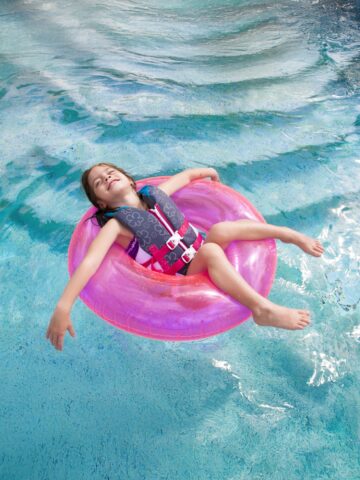The term “joy ride” does not apply when it’s pouring and the wind is gusting. The best strategy for driving in bad weather is to avoid it. But if going out is necessary or you get caught in bad conditions once you’re already on the road, follow these safe driving tips:
- Ensure your headlights are on. Many states require drivers to keep their headlights on if windshield wipers are on.
- Slow down. Braking takes longer on slippery roads: The slower you go, the easier it will be for you to maintain control and stop your vehicle.
- Increase your following distance behind other cars. This will give you more time to stop safely.
- Make sure your car is prepared for the conditions (check your battery, antifreeze, windshield wiper fluid, windshield wipers, headlights and tires).
- Use caution near intersections. Never assume that because you have the green light or the right of way that the intersection will be clear. Always scan ahead to spot potential hazards.
- Stay in one lane as much as possible, and avoid unnecessary lane changes.
- Keep two hands on the wheel and two eyes on the road at all times.

How to drive safely in the rain
Roads are dirty places. Between tires stirring up gravel and engines dripping oil and other fluids, a lot of oily and slick substances build up on roads. That’s why roads are at their slickest almost immediately after it starts raining. The water brings those oils to the surface, making it sneakily slick.
If you get caught in a slick situation and your car starts gliding or hydroplaning, don’t panic or slam on the brakes. Keep a firm grip on the steering wheel, lift your foot off the accelerator, and let the vehicle coast (making sure not to turn the steering wheel) until you feel your vehicle get traction again.
To prevent hydroplaning:
- Ensure your tires are properly inflated and have significant tread
- Look for standing or running water and avoid it (if you can)
- Go easy around turns
- Keep your speed down: speed should match conditions
Be aware of thunderstorm warnings. If a thunderstorm starts while you’re driving and visibility is poor, pull over and wait it out. Don’t run the risk of being struck by lightning: Stay in your car and pull off the roadway into a parking lot if possible.
How to drive safely in fog
Fog can reduce visibility to less than ¼ mile. Fog can also trick you into thinking you’re going slower than you really are, so keep the speed down. When you can’t see far ahead, it’s hard to see brake lights or traffic signs until you’re almost upon them. And just because you can’t see doesn’t mean that your high beams will improve visibility. In fact, high beams reduce visibility in fog. If your car has fog lamps, use them.
How to drive safely in snow and icy conditions
Driving a car is never “easy,” but this is especially true in wintry weather. To hone your skills, ask someone with winter driving experience to take you to a vacant parking lot where you can practice driving, turning, and stopping in the snow.
If you must travel, keep your car gassed up so that the fuel lines don’t freeze. Clear snow completely off the entire car (including the roof), remembering to sweep the tail lights and headlights. Watch out for slow-moving vehicles like snowplows and sand trucks. Try not to get too close: the last thing you need in a snowstorm is a windshield full of sand. Also try to avoid passing these vehicles.
Put together a car emergency kit that contains:
- an ice scraper and a snow brush
- a bag of sand, salt or cat litter for traction if you get stuck in snow
- emergency warning flares or triangles
- blankets
- gloves or mittens
- a flashlight and batteries
- a first-aid kit
- booster cables
- nonperishable snack foods
- a candle and matches
- a cup in case you need to melt snow for water
If you get stranded, stay with your vehicle and call for assistance. Run the heater occasionally to keep warm, but avoid carbon monoxide poisoning by ensuring your tailpipe isn’t stuffed or blocked with snow or other debris.




